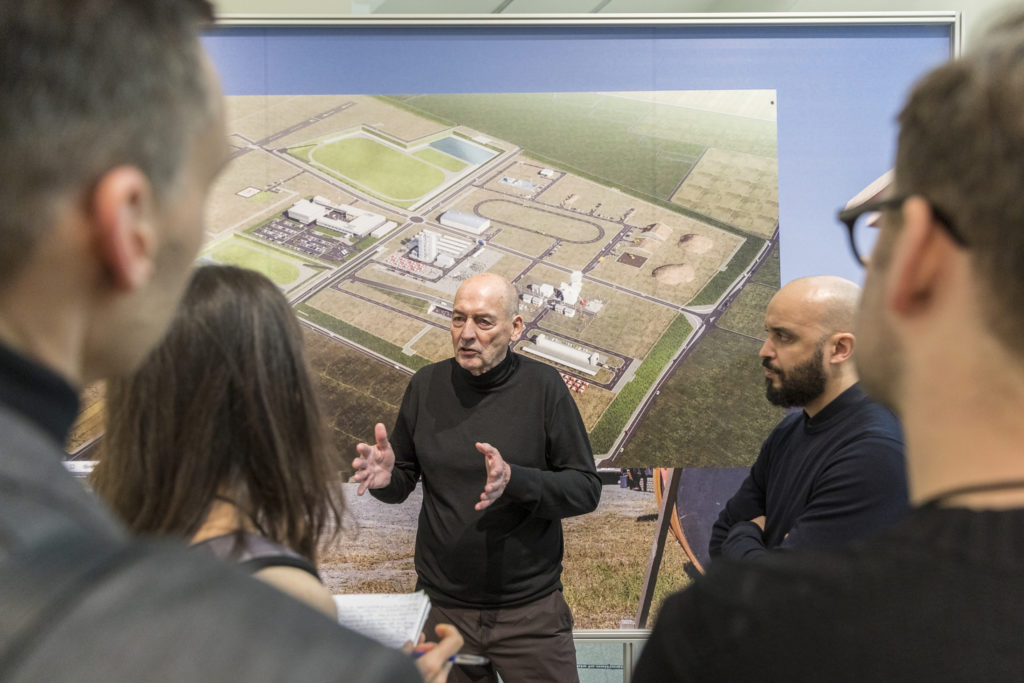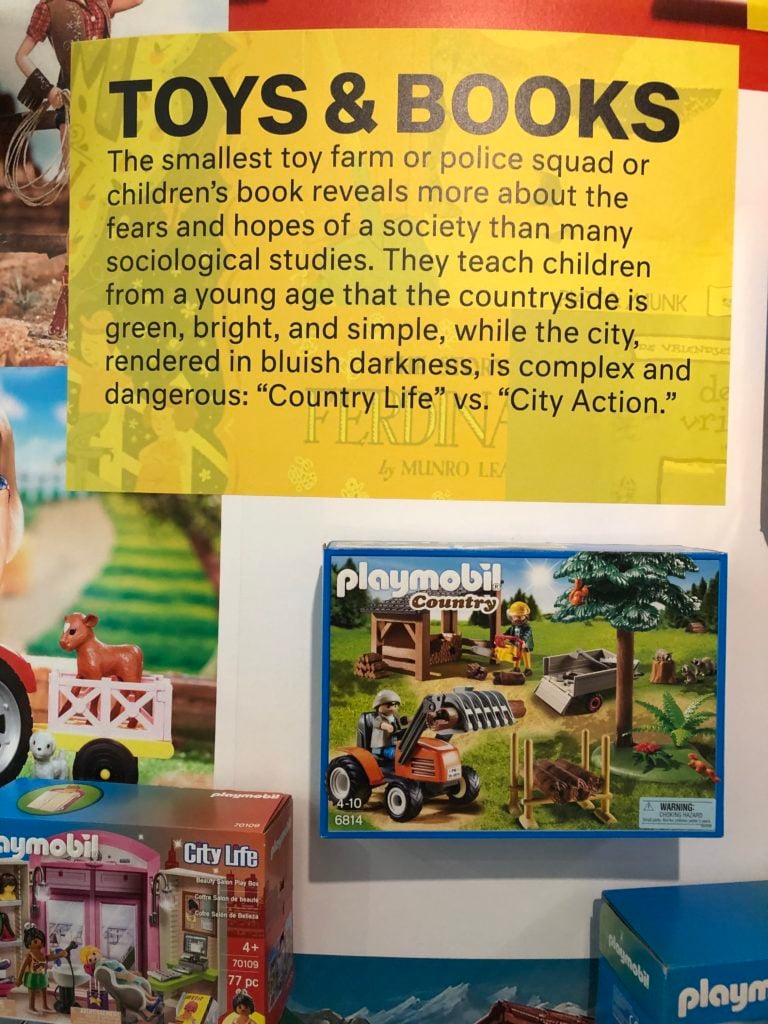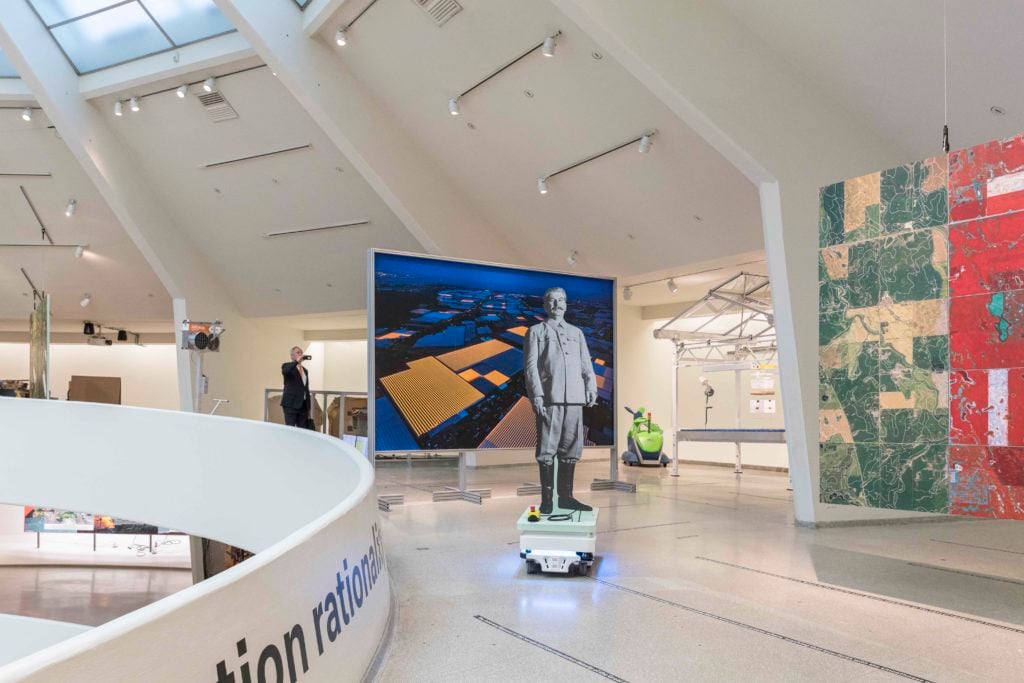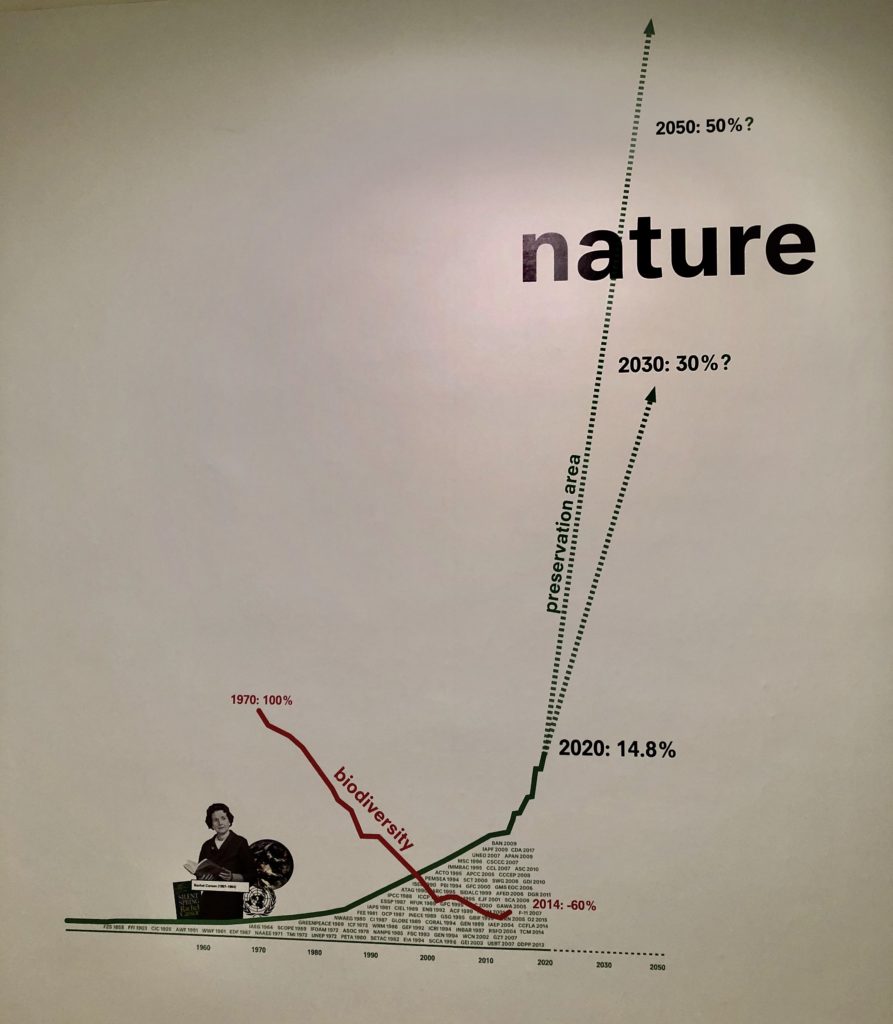The Guggenheim’s current exhibition, “Countryside, The Future,” is based on a fundamentally silly premise: that after 40-plus years of primarily building in, and theorizing on, cities, which account for roughly 2 percent of the earth’s surface, Dutch architect Rem Koolhaas is a reliable authority on the other 98 percent of the globe.
In his assertion that the countryside has been a “neglected realm” of undersung innovation and transformation, the celebrated iconoclast (and a cohort of researchers at the Guggenheim, various global universities, and his own architectural think tank, AMO) has launched into a mission of course correction.

Rem Koolhaas explains his show. Image: Laurian Ghinitoiu courtesy AMO.
Their 10-year effort to mine the obscure corners and various histories of the planet’s enduring “back of house”—the space that fulfills humanity’s need to grow food, sweep industrial byproducts under the rug, and temporarily escape the stresses of city life—culminate here in a wildly uneven, sometimes illuminating, frequently tone-deaf homage.
The show’s organizers describe it as a “pointillist” portrait of an enormous topic, although they’ve stretched the term “countryside” beyond meaningful definition to include oceans, beaches, and any non-strictly urban space. The exhibition unfurls as a series of wide-ranging case studies, presenting plainly, without judgment or urgency, the vast modernization campaigns of 20th-century fascists; acquisitions of Patagonian forests as corporate philanthropy; and the countryside’s enduring place in American pop culture. A feature called “Country Semiotics” that runs the height of a rotunda column notes Lil Nas X’s historic breakthrough into a predominantly white country music industry and dissects the nuances of American pop culture, citing the implicit country vs. city bias that Barbie and LEGO impart on young children.

Rem Koolhaas’s explanation of how toys teach children about the countryside. Photo: Janelle Zara.
The wacky applications of texts and cutouts all over the museum’s surfaces do little to hide the fact that most of the exhibition design is a failure of imagination, the cliché of pasting museum walls with content better suited for books. (Mired in air bubbles, crooked lettering and misaligned seams, they’re poorly pasted, too.) Claiming to be neither art nor architecture, the procession of case studies fills the niches between the rotunda’s load-bearing walls with charts, graphs, and archival photos, effectively transforming the atrium into a series of high school science-fair displays.
Worse still, a fascinating conversation between two lecturers from the University of Nairobi is mounted as a transcription. It’s not that I’m opposed to reading; it’s just that dissertation-as-exhibition suggests an embarrassingly clinical misreading of the museum-going public’s interests.

koolhaas
In defense of the exhibition’s text-heaviness, Guggenheim curator Troy Conrad Therrien describes it less like reading a book and more like “an opera or a film where you have an incredibly dense playbill.” Hamilton, this is not, but “Countryside” aspires to delivering an experience. The Guggenheim’s upward climb starts with a historical survey, illustrating the Cartesian geometries politicians have used to modernize and mobilize the countryside: there are maps of Western Territories that Thomas Jefferson parceled into six-square-mile townships, and photographs of villagers in Maoist China tilling the land into uniform rows. (A description of 20th-century political figures as “mostly white men” sticks out as a woke flex—one that would be more effective had the curators not completely omitted indigenous peoples from this show.)
As the ramp ascends, the widening rotunda coincides with a widening narrative, echoing Guggenheim director Richard Armstrong’s claim that this marriage of “information and spectacle” has been “choreographed to the spatial idiosyncrasies” of Frank Lloyd Wright’s architecture. The path diverges from linear histories into modern innovations, like those of remote Kenyan villagers who, empowered by universal basic income paid out via mobile banking, resist notions that they’re fated to urbanization. Faceless architectures meant solely for robot-manned fulfillment centers emerge east of Reno. AMO is now in partnership with Volkswagen to develop an e-tractor. And formerly agrarian China, having drastically reduced its poverty levels and embraced rural e-commerce, is now a colonial power carving up large sections of Africa.
Onward and upward, the science-fair booths grow increasingly sparse the higher you go, as if all sense were evaporating through the roof. Explanatory texts give way to seeming omissions, plainly odd choices, and robots. Exhibits stumble on their own abstraction. What look like actual slides from a Dutch environmental agency’s Powerpoint presentation are reproduced on the walls. Plainly inscrutable data visualizations appear without context. Roving cutouts of Stalin and unidentified others, individually mounted on Roombas, are consistently standing in the way. I am mildly offended by the collage of commentary by solely non-Chinese intellectuals on their impressions of Mao’s China (according to the late Roland Barthes, “China has no color”) and I am haunted by unanswered questions about a scrolling stock ticker paired with an inexplicable illustration of the Himalayas.

Stalin makes an appearance in the exhibition. Laurian Ghinitoiu courtesy AMO.
At the very top, bars of text arranged on the floor in right angles (a winking nod to Descartes) impose a mocking choreography: reading them forces you into a kind of shoe-gazing waltz. Reading the lengthy, swirling ode to the countryside inscribed on the ceiling forces you to go all the way back to the bottom, look up, and twirl.
There’s no subtly embarrassing dance required to read Koolhaas’s aptly titled essay, “?,” which is printed in full on one of the museum’s few straight gallery walls. The meandering train of thought, verging on poetry but not quite, is a series of questions:

Indecipherable graphs leave much to the imagination. Some might say too much. Photo by Janelle Zara.
This essay succinctly embodies the underlying obnoxiousness of this show. In lieu of engaging exhibition design, an architect capable of realizing Seattle Central Library and Beijing’s CCTV Tower delivers literal and figurative wallpaper—a two-dimensional compression of architectural imagination that occupies more space than it’s worth. It savors quirkiness over relevance, landing just outside questions of present urgency. Populism and waning globalism are neatly brushed away as “only the most obvious effects” of rural neglect. The existential crisis of climate change is limited to a chapter on melting permafrost—important, yes, but the world is literally on fire.
This pointillist opera, which is neither as culturally incisive nor as wildly imaginative as “Delirious New York,” Koolhaas’s seminal urban treatise, comes to no satisfying end. The countryside is a pressing topic, just in ways not presented here. Approaching the final stretch of the rotunda’s interior wall, the word “can” appears, with the remaining phrase hidden around the curve. The whole thing becomes visible at the very, very end: “Can today’s extreme know-how be combined with goodness?” The question would be infinitely less irritating had I not been asked to chase it uphill.
Source: Exhibition - news.artnet.com



